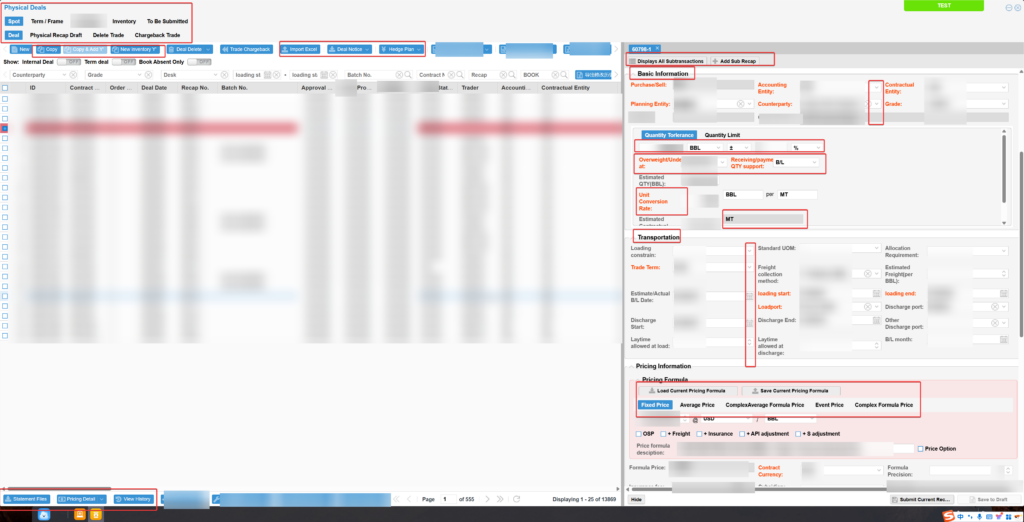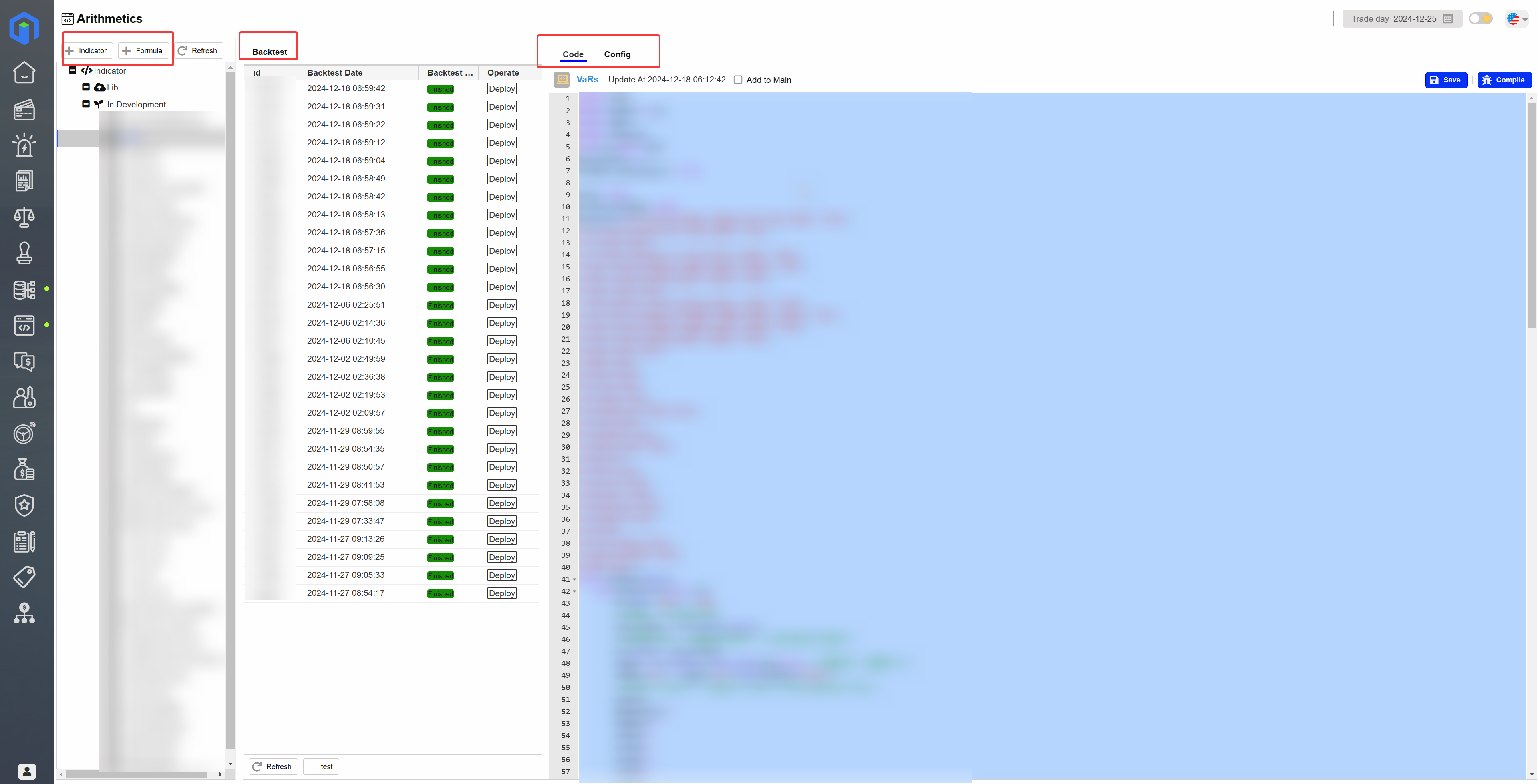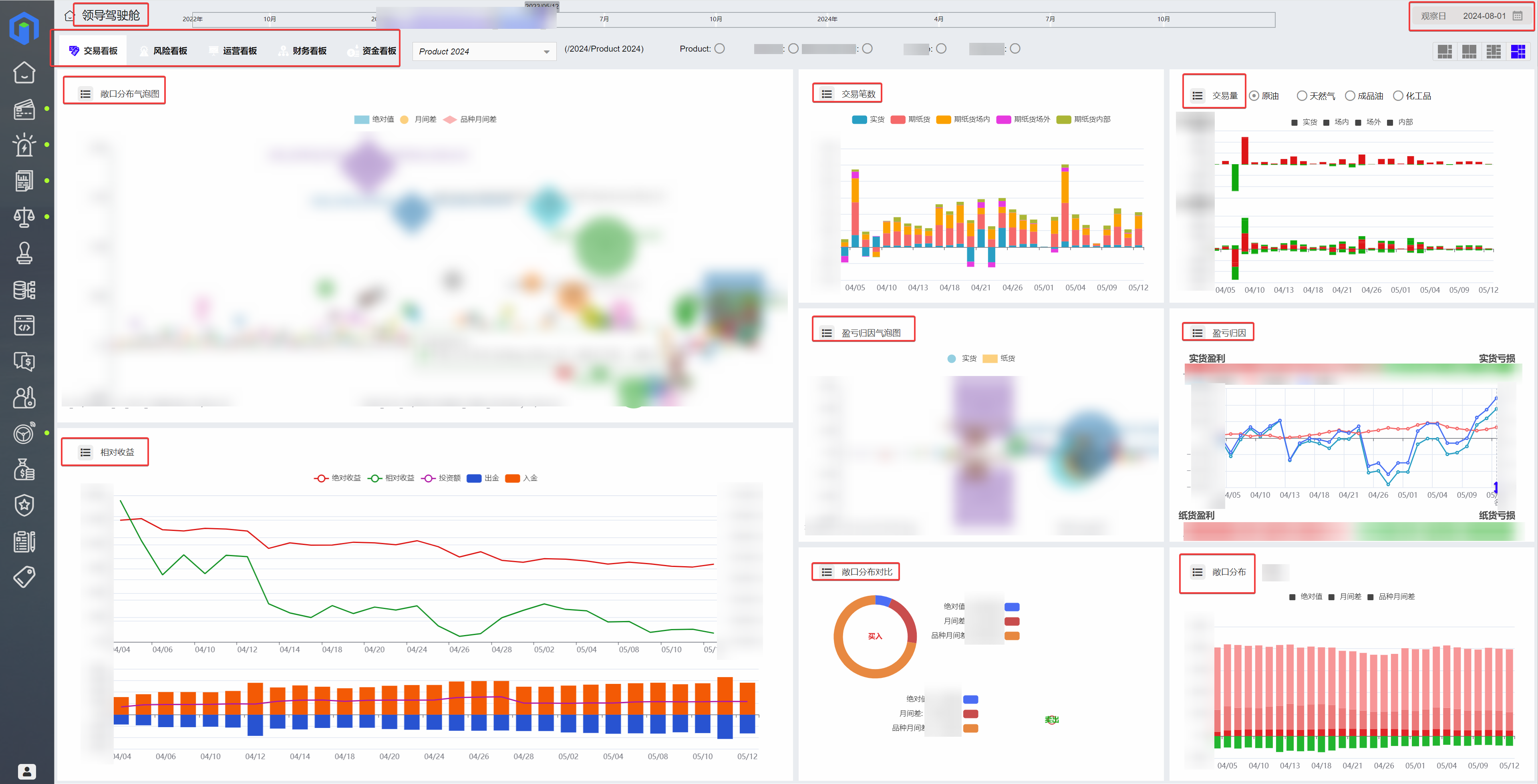In the context of global trade, physical trade management faces multiple challenges. These include low data quality, inefficient trade execution, information silos, and complex settlement processes. These issues severely impact operational efficiency and market competitiveness.
Traditional management methods struggle to meet the fast-changing market demands. Modern CTRM (Commodity Trading and Risk Management) systems provide intelligent and integrated solutions to address these challenges.
The Fusion system, with over a decade of experience in the energy and commodity trading industry, offers a comprehensive digital solution. It covers trade management, execution, and settlement processes.
This article will analyze the common challenges in physical trade management. It will also explain how Fusion enhances business transparency and execution efficiency through intelligent and automated modules, enabling efficient operations.
I. Challenges in Physical Trade Management
Trade companies face four major challenges in physical trade management: data quality and complexity, transaction matching and execution efficiency, data sharing and compliance, and settlement complexity. These issues increase operational difficulties, pose financial and compliance risks, and become key bottlenecks to business growth.
1.Data Quality and Complexity
Physical trade involves various transaction types, such as spot and long-term contracts. The fulfillment rules are complex, and unit conversions are cumbersome. Additionally, market price fluctuations make it difficult for traditional management methods to ensure data accuracy and real-time updates.
Manual data entry leads to delayed updates and frequent calculation errors. These affect contract fulfillment, inventory management, and profit calculations.
In energy trading, pricing models vary, including fixed price, average price, and event-based pricing. Traditional tools lack flexibility, leading to inaccuracies in transactions and delays in strategy adjustments, further increasing management difficulty.
2.Transaction Matching and Execution Efficiency
Matching purchases and sales, as well as inventory, is challenging. The disconnect between trade and execution management makes it difficult to precisely match quantities, amounts, and delivery schedules, increasing operational risks.
Traditional management relies on manual entry and approvals. The process is cumbersome, with low automation in trade execution, leading to disorganized document management and reduced efficiency.
Managing cross-level transactions adds another layer of complexity, further restricting business operations.
3.Data Sharing, Transparency, and Compliance Risks
Information silos are widespread, and data sharing across systems is insufficient. Poor information flow leads to high communication costs, impacting business coordination and decision-making efficiency.
Additionally, transaction changes are not systematically tracked, resulting in low data transparency and making audits difficult. This increases compliance risks and operational uncertainty.
4.Settlement Complexity
Physical trade settlement is complicated. Cost allocation and matching are challenging, and the calculation of final payments is complex. These factors reduce financial management efficiency and complicate cash flow planning.
Invoices, payments, currencies, exchange rates, and tax data are scattered across systems without integration. This leads to accounting errors, making reconciliation and compliance management more difficult.
These pain points highlight the need for an integrated and intelligent system to optimize physical trade management. Such a system can help businesses gain a competitive edge in the market.
To address complex trade scenarios and diverse management needs, Fusion provides a comprehensive vertical solution tailored to the commodity and energy trading industry.
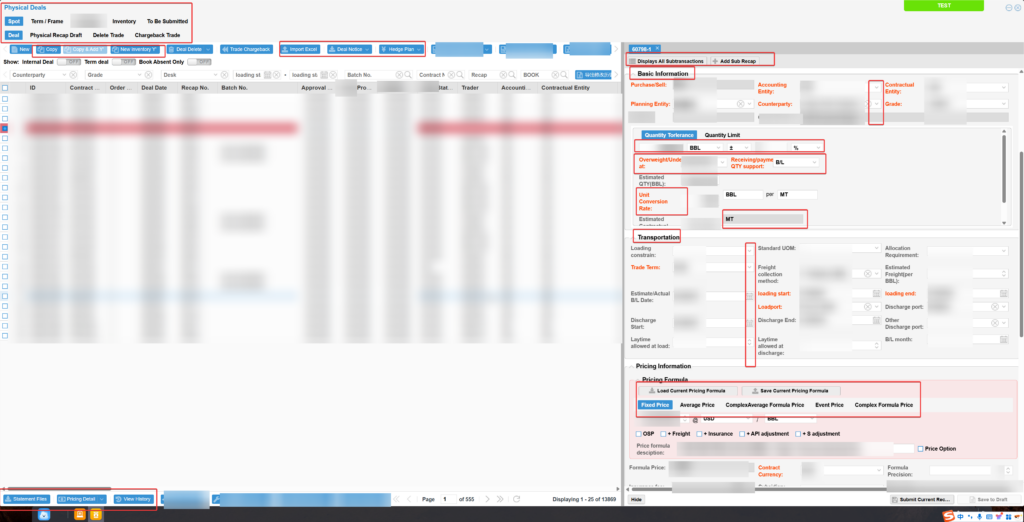
Next, we will focus on Fusion’s physical trade management features. We will explore how it helps businesses tackle these challenges efficiently.
II. Core Functions of Fusion in Physical Trade Management
Fusion is an all-in-one CTRM/ETRM system that integrates business, risk management, and finance. It specializes in energy and commodity trading management.
With over ten years of industry experience, Fusion has developed core modules for physical trade management, financial derivatives hedging, market and credit risk management, and financial management.
The physical trade management module covers the entire trade lifecycle. It includes three key aspects: trade management, trade execution, and settlement management.
Below, we introduce the core functions of the trade, execution, and settlement modules.
1. Physical Trade Management
This module supports the entry and management of spot and long-term contracts. It covers everything from basic information maintenance to contract terms configuration, ensuring data integrity and consistency.
Core Functions:
- Trade Entry and Management: Supports the management of key details such as basic information, transportation, pricing, payments, and credit terms, ensuring data completeness.
- Flexible Pricing Models: Supports fixed pricing, average pricing, event-based pricing, and index pricing. It also allows for complex formula-based pricing to meet diverse business needs.
2. Trade Execution Management
The execution management module handles all trade execution-related information. It ensures seamless business processes and provides comprehensive control over the execution lifecycle.
Core Functions:
- Execution Data Management: Covers trade, settlement, logistics, cost, quality, inventory, and documentation data, providing a complete execution record.
- Intelligent Matching: Supports purchase-sale matching and inventory matching. This ensures efficient trade execution, improving collaboration and financial accounting accuracy.
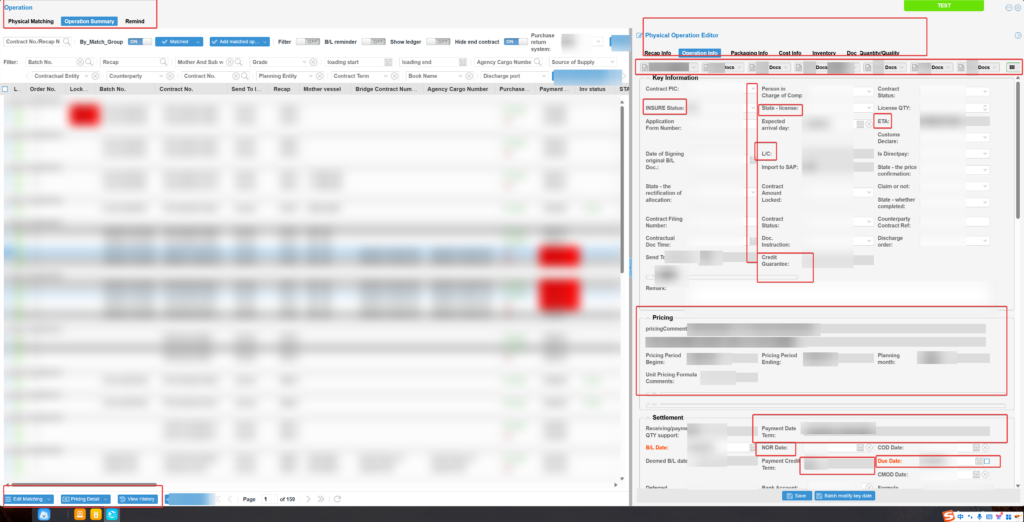
3. Physical Trade Settlement Management
The settlement module manages all payment and cost-related processes in physical trade execution. It ensures settlement accuracy, compliance, and efficient financial workflows.
Core Functions:
- Comprehensive Cost Management: Supports different cost types, pre-settlement, and final settlement, ensuring detailed cost accounting.
- Automated Settlement Approval and Vouchers: Provides approval workflows and automatically generates financial vouchers, improving financial processing efficiency.
Fusion’s trade, execution, and settlement modules form a complete physical trade management system. Covering the full process from trade creation to final settlement, Fusion optimizes data quality, improves execution efficiency, and ensures financial settlement accuracy.
3. Practical Validation: How Fusion Solves Physical Trade Management Challenges
With over a decade of implementation experience in the energy trade sector, the Fusion system has developed a mature solution to help clients overcome physical trade management challenges.
Below, we will detail how Fusion’s physical trade management framework enables enterprises to efficiently address these pain points.
1. Standardization and Automation of Trade Data
The physical trade module enhances data quality and reduces management complexity through intelligent entry, automated calculations, and standardized rules.
- Automated Trade Creation and Modification: Supports trade duplication, modification, splitting, and automatic generation, ensuring efficiency and data consistency.
- Intelligent Trade Entry: Provides default data population and historical data references. Most fields use drop-down selections, minimizing manual input errors. Users only need to manually fill in a small number of dynamic fields.
- Unit Conversion: Pre-configured measurement units automatically convert values, reducing manual calculation errors and ensuring data consistency.
- Support for Multiple Pricing Models: Includes fixed price, average price, event price, point pricing, and complex formula pricing. Users can set different discount rules and calculation methods, ensuring flexible pricing and trade accuracy.
- Automated Calculation and Formula Management: Supports mark-to-market and pricing formulas, automatically generates risk control formulas, and allows saving commonly used formulas. This reduces repetitive work and enhances pricing management flexibility.
- Automated Data Validation: The system alerts users when conflicts arise between entered data, preventing mismatches and ensuring accuracy.
- Pricing Details and Document Management: Provides detailed pricing breakdowns, personalized document management, and attachment handling. This ensures transparency in pricing information and facilitates document exchange within and outside the system, maintaining complete trade records.
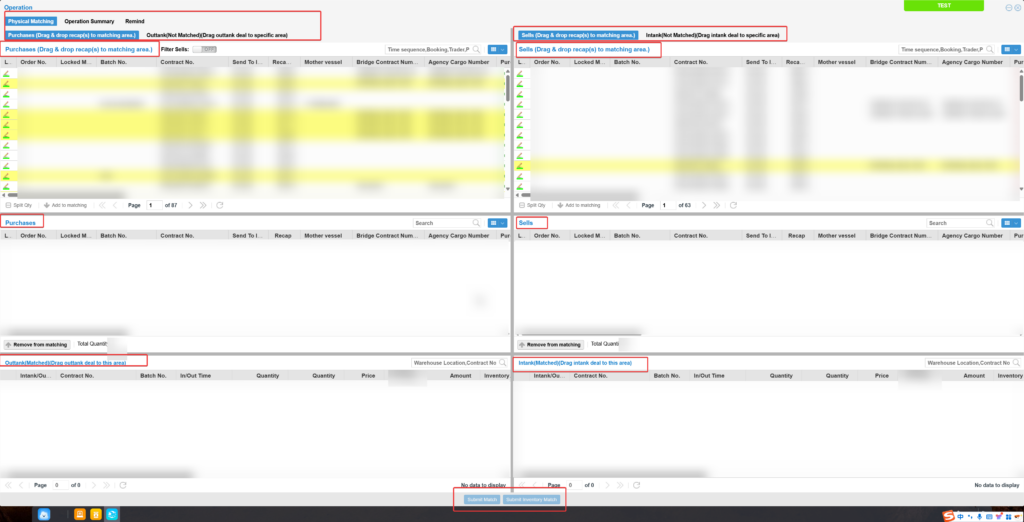
2. Integrated Trade and Execution Management
The physical trade and execution modules are seamlessly connected to improve trade-execution alignment and enhance overall efficiency.
- Spot and Long-term Contract Management: Supports various trade types, including spot and long-term contracts. Also allows trade splitting and sub-trade management, improving complex trade handling.
- Intelligent Matching Management: Enables purchase-sales and inventory matching. This enhances execution efficiency, streamlines collaboration between business and finance teams, and reduces manual matching workload and errors.
- Automated Execution Management: Trade information is automatically synchronized with the execution module, reducing manual input and increasing execution transparency.
- Multi-Dimensional Cargo Management: Manages cargo movement based on date, quantity, and amount, providing an accurate basis for settlement and improving execution visibility.
- Automated Calculation and Synchronization: During trade execution, the system automatically calculates settlement data and cost allocations. These are synchronized with the physical settlement module, minimizing update time and costs while ensuring data consistency.
- Optimized Approval Workflow: Supports customizable approval processes, enhancing efficiency and ensuring approval transparency and traceability.
- Electronic Document Management: Centralizes documents such as licenses, insurance, customs, inspection, and bills of lading. Automatically links them to trade data, reducing errors and improving management efficiency.
- Cross-Level Management Support: The portfolio management module supports classification of organizational structures and trades, enabling horizontal and vertical trade management, improving operational efficiency, and facilitating calculations.
3. Integrated Data Management and Compliance Support
The system eliminates data silos, enables cross-module data sharing, enhances transparency, and reduces compliance risks.
- Integrated Data Platform: Connects with financial and other systems, ensuring seamless data flow, reducing silos, and improving information circulation efficiency.
- Trade Modification Management: Records all trade modifications with approval controls. This enhances transparency, ensures traceability, and mitigates compliance risks.
- Access Control: Implements role-based access control, ensuring that different roles can only view authorized data, preventing data leaks, and improving security.
- Automated Data Synchronization: Updates data automatically across modules. For example, execution settlement data is synchronized with the settlement center, avoiding duplicate entries, ensuring consistency, and reducing communication costs.
4. Automated Financial Settlement and Accurate Reconciliation
The execution and settlement modules optimize expense management, final payments, and cross-currency settlements, improving financial efficiency.
- Automated Expense Allocation and Calculation: Supports automated expense calculations and allocations, reducing manual errors and simplifying cost management.
- Bulk Freight Settlement: Enables batch processing of freight settlements, displaying summaries or detailed views, enhancing financial processing efficiency.
- Automated Final Payment Management: Automatically calculates trade final payment amounts, reducing manual workload and improving cash flow management.
- Multi-Currency Settlement Support: Supports multiple currencies and exchange rate management, performing automatic conversions. This simplifies cross-currency settlements and mitigates exchange rate risks.
- Alignment of Business and Financial Data: Automatically synchronizes trade data with financial systems. This ensures unified management of invoices, amounts, payments, currencies, exchange rates, and taxes, reducing reconciliation complexity and improving financial compliance.
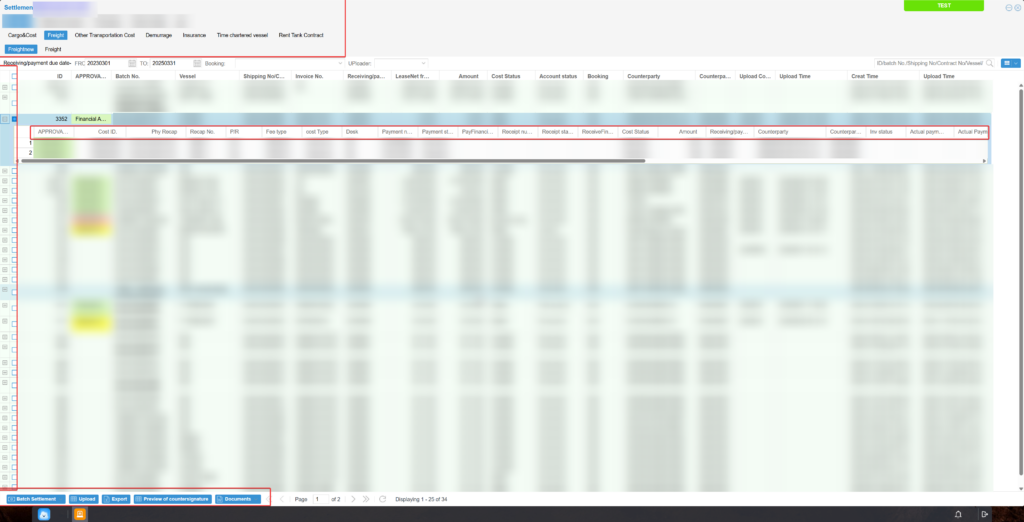
With these solutions, Fusion has provided efficient trade execution and settlement management services to numerous large and medium-sized oil traders.
In practical applications, a major oil trader efficiently processes tens of thousands of trades annually using this system, improving settlement efficiency by 30%. Another international energy enterprise shortened trade execution time by 20% through intelligent management, significantly enhancing cash flow turnover and market competitiveness.
4. Insights: Enhancing Physical Trade Solutions Through Scenario-Based Optimization and Technology
Through years of experience in bulk energy trade, we have realized that successful physical trade management requires a deep understanding of customer business scenarios, meticulous management of details, and seamless business process integration. Keeping pace with technological advancements is equally critical, enabling intelligent and automated solutions that enhance efficiency and accuracy in trade management.
Looking ahead, we will continue refining industry-standard solutions by integrating global best practices and cutting-edge technologies. We aim to explore diverse bulk trade management scenarios while continuously improving our technology, products, and implementation capabilities. Our goal is to provide efficient and intelligent solutions that empower enterprises to maintain a leading position in the global market.

